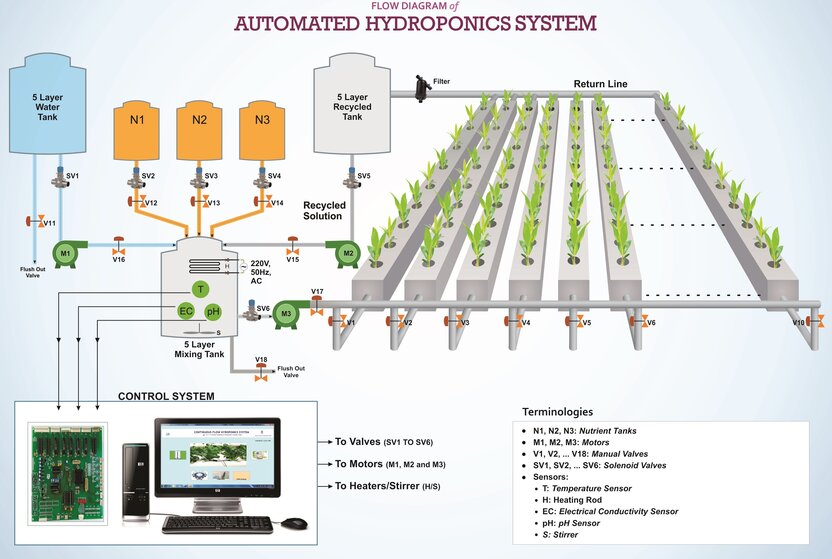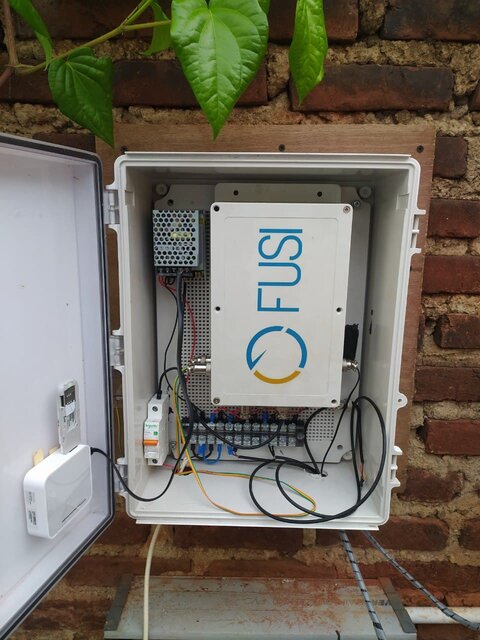Hydroponic farming is a method of growing crops without soil, with the main benefits of environmental and nutrient control, water conservation, and reduction of labor. This technique relies on a number of technologies that the principles of automation can be applied in order to improve yield and consistency. Many of the aspects that make hydroponic farming so efficient can also make it challenging to implement. Water and nutrients must be provided in a balanced ratio while being constantly monitored and adjusted as plants develop. Temperature regulation can also become a problem since the circulating water system acts as a heat pump. Additionally, the microbial communities that can benefit or harm your crops are now competing in an aqueous rather than a terrestrial environment, sending us even further into unknown and potentially dangerous territory. And to make matters worse, if you have a prolonged power outage, you may need to manually water or have a generator to keep the water pump going, else you may injure your crops.
Although there are several different hydroponic and cultivation techniques, the application of automation principles to monitor and manage greenhouses and hydroponics is very useful.
At the core of this automated hydroponic system is the Raspberry Pi single board computer. This $35 computer is only the size of a deck of playing cards, but it has all the components you would find in a full computer, including CPU, RAM, video/audio output, USB, WiFi, Bluetooth, Ethernet, and micro SD slot. The most important feature of the Raspberry Pi for our application is its general purpose input-output (GPIO) pins, which will be used to connect inputs, such as switches and sensors to measure the environment, and outputs such as pumps and relays to move liquids and control electrical devices that will manipulate the environment.

Fusi has developed automation technology for hydroponic systems that include water sensors and nutrient sensors. This device is applied to greenhouses which in the future will be developed with several sensors such as:
- water and nutrition sensors
- humidity sensor
- temperature sensor
- CO2 sensor sensor
- LED sensors
